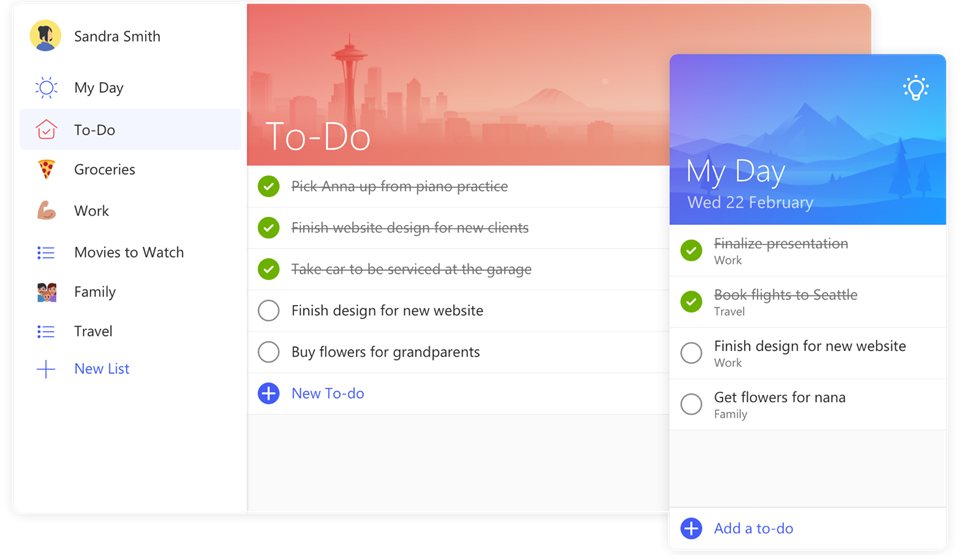Microsoft’s obsession with Office 365 has possibly reached such a fever pitch that we can expect them to launch at least one new service every month. In one of our earlier articles – Microsoft Upping the Pace on Office 365 Features and Product Launches – we shared details on how the velocity of updates from Office 365 team has gone up in the last six months. Today, the Redmond giant launched Microsoft To-Do on Office 365. It is essentially a task management app to help plan and manage our day.
The To-Do app allows users to create lists for work, home projects or just about anything. You can keep tabs on your deadlines, add reminders, due dates and notes, and also personalize each list with colorful themes. Microsoft will stay true to its device-agnostic theme, allowing users to access their lists from any device – iPhone, Android smartphone, Windows 10 devices and also the web.
Microsoft acquired 6Wunderkinder in June 2015, the creators of the Wunderlist app. The To-do list app had more than 13 million customers at the time of acquisition, and Microsoft raved about the acquisition in their blog post, and about how the Wunderlist app fits nicely into their business productivity product portfolio.
Today, the launch of the new app, which will be integrated with its core SaaS application suite, is one extra addition to the many layers that Microsoft has built into Office 365.
“To-Do is built on Office 365, which in coming months will enable the product to be even more useful in more places. Our first integration with Outlook makes it easy to stay on top of your Outlook Tasks from anywhere. It will automatically sync your Tasks with To-Do, and allow you to access and manage them across devices.” – Microsoft
Here are the links to Microsoft To-Do Preview for iPhone, Android, Windows and the web.
Thanks for reading our work! We invite you to check out our Essentials of Cloud Computing page, which covers the basics of cloud computing, its components, various deployment models, historical, current and forecast data for the cloud computing industry, and even a glossary of cloud computing terms.




